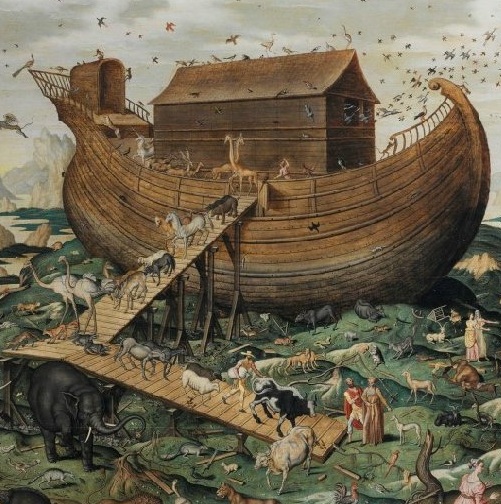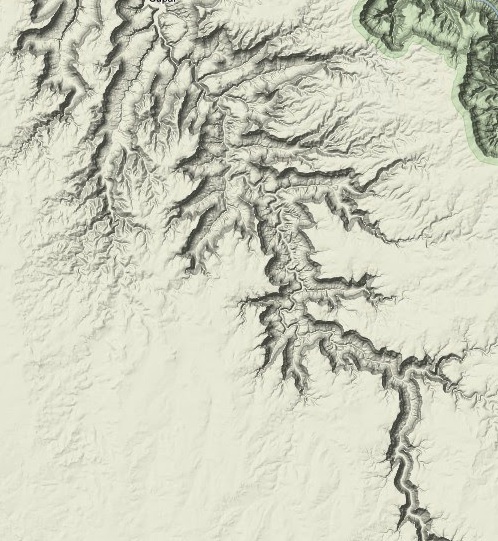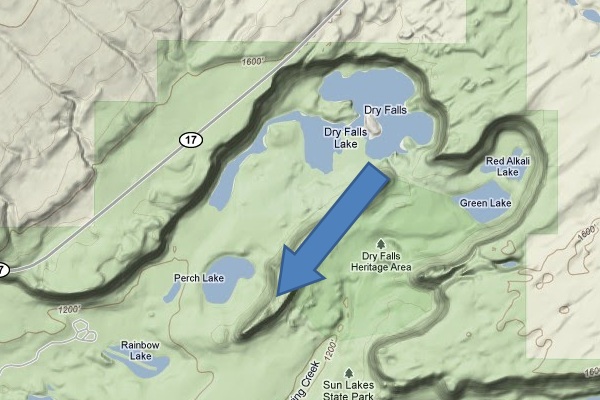 I attended the 2011 Seattle Creation Conference and made it out to tell the tale.
I attended the 2011 Seattle Creation Conference and made it out to tell the tale.
The slogan of the conference was, “Dedicated to glorifying God through the scientific study of His Creation and refuting the false claims of Evolutionism.” (Is it just me or does that last phrase betray a presupposition?) There were prayers galore, sometimes both opening and closing a single lecture.
If the speakers were confident that science will eventually support the biblical view, they could let the science speak for itself. They could show confidence that science will lead us to the biblical answer. The question, “If Science and Scripture diverged, which one would you follow?” came to mind, but the answer was obvious.
This was a young-earth Creationism conference. “Young earth” means: the earth is less than 10,000 years old. “Creationism” means: evolution is nonsense. There were probably some old-earthers there too, but I’m pretty sure that I was the only one stupid enough to accept the scientific consensus on evolution.
The remainder of this post is about lectures by Mike Oard from Creation Ministries International, who spoke for two hours on Noah’s flood. (Let me add that everyone was polite, including me, so I’m attacking the “science,” not the speakers.)
Oard began with a couple of Bible quotes to justify using reason. It’s odd to need such a justification in a conference “dedicated to … scientific study,” but OK. One quote was, “Examine carefully; hold fast to that which is good” (1 Thes. 5:21). I suspect that the last phrase was seen as license to pick and choose.
He stressed that, while some Christians imagine this to be a local flood, it was global. I enjoy seeing Creationists attack each other, but he had some good points that can be useful when responding to an apologist who wants to salvage Genesis by arguing for a local flood.
- A local flood would’ve swept the ark downstream to a lake or ocean, but the Genesis story has the ark ending its journey on the top of a mountain. Only the traditional global flood could raise the ark higher than it started.
- With the rainbow, God promised to never repeat the flood (Gen. 9). But there have been lots of local floods. Did God break his promise, or was the flood actually global?
- Animals came from all over the earth. Why bother collecting New World animals (say) for a flood limited to Mesopotamia? Indeed, why collect any animals except those few whose habitat would be entirely destroyed?
Oard claimed that there are 500 flood traditions from around the world. Some have dramatic commonalities with the Bible account: birds were sent out to search for dry land, the boat landed on a mountain, the god(s) favored one family, Man’s transgression created the need for the flood, animals were saved, and so on. He argues that this is evidence of a global flood, but it sounds to me like better evidence that a flood story is a popular archetype and that stories were shared. Indeed, the Noah story is not only quite similar to the Gilgamesh story but came afterwards.
And while we’re talking about copying, Genesis explains where the flood water came from this way: “All the springs of the great deep burst forth, and the floodgates of the heavens were opened” (Gen. 7:11). Water from above and below? This is the cosmology of the Sumerians, who preceded the Jews.
Now, on to Flood evidence from strata.
Even if you didn’t know that this is a terrain image of a small part of the Grand Canyon, you knew that it was a canyon eroded by water. The water obviously flows from the small, shallow filaments down into the deeper parts of the canyon. Oard used this as evidence of the Flood and claimed that the Grand Canyon was carved by the receding floodwaters over months, not erosion over millions of years as conventional geologists argue.
But we can resolve this disagreement. Oard mentioned another canyon that he and geologists agree was carved quickly by a catastrophic flood. Dry Falls in eastern Washington State has no water flowing over it now, but it once did. When the ice dam containing prehistoric Lake Missoula collapsed, it released 500 cubic miles of water in a few weeks. The flood scoured much of eastern Washington, and the water rushing over Dry Falls was 300 feet deep.
Dry Falls is more than twice as high and twice as wide as Horseshoe Falls in New York. This is what a flood-carved canyon looks like. The water flowed in the direction of the blue arrow, and the repeated floods eroded the canyon in the opposite direction.
This has features quite the opposite of the Grand Canyon. The Dry Falls canyon is deeper as you go upstream, not shallower. The Dry Falls canyon has a fairly simple cliff, not delicate filaments. No comparison.
Another “evidence” was polystrate fossils. Imagine a place where silt deposits at a rate of one millimeter per year. Tall things like tree stumps couldn’t have stood untouched above ground for centuries while sediment slowly built up to bury them. And yet these “polystrate” fossils have been found and are a big puzzle for conventional science.
Wikipedia disagrees, and Talkorigins argues that not only is this not a problem for conventional science now, it wasn’t a problem in the 19th century when they were first discovered. These articles describe many ways that silt, ash, or sand can be deposited rapidly to quickly cover a large item.
Another bit of evidence comes from Mount St. Helens. Shortly after it exploded in 1980, Creationists found small canyons that looked like miniature Grand Canyons. Well, yeah—water carves ash pretty quickly. How this shows that floodwater carved the Grand Canyon out of solid rock in months, I don’t see.
He imagines that today’s mountains rose up during the year-long flood. Wow—that’s a lot of mountain building. I didn’t hear anything about what mechanism would plausibly have done this.
Why can’t geologists see the evidence? Because scientists hate the Bible, Oard says. And don’t get him started on the geologic misinformation distributed by the National Parks.
Of course, someone like me whose mind is clouded with the scientific consensus will have lots of questions.
- During the period when floodwater was rising, he imagines dramatic erosion and sedimentation that would leave sediment layers miles thick under the flood. But what would cause this erosion if the floodwater simply rose gradually?
- What happened to the freshwater fish after their lakes and ponds became part of the salty ocean? How did the plants survive?
- He showed a map of some complicated Western geology. Billions of years of erosion plus plate tectonics could certainly create this. But a flood over a flat, homogeneous earth? I saw no explanation for this in his model.
- God’s conclusion of the Flood is: “Never again will I curse the ground because of humans, even though every inclination of the human heart is evil from childhood” (Gen. 8:21). Gee, what a nice guy. Going down this path, we’re evil because God made us that way. And what’s the moral justification for drowning so many people? Couldn’t God think of more humane ways of restarting his experiment?
I’d like to end with a note from our sponsor, the scientific consensus. This is what gives us the technology-intensive world that we live in. My bias is that I accept the scientific consensus as the best explanation that we have at the moment. What else can I do given that I’m not a scientist? Indeed, what else could any conference attendee do?
Photo credit: Wikimedia


